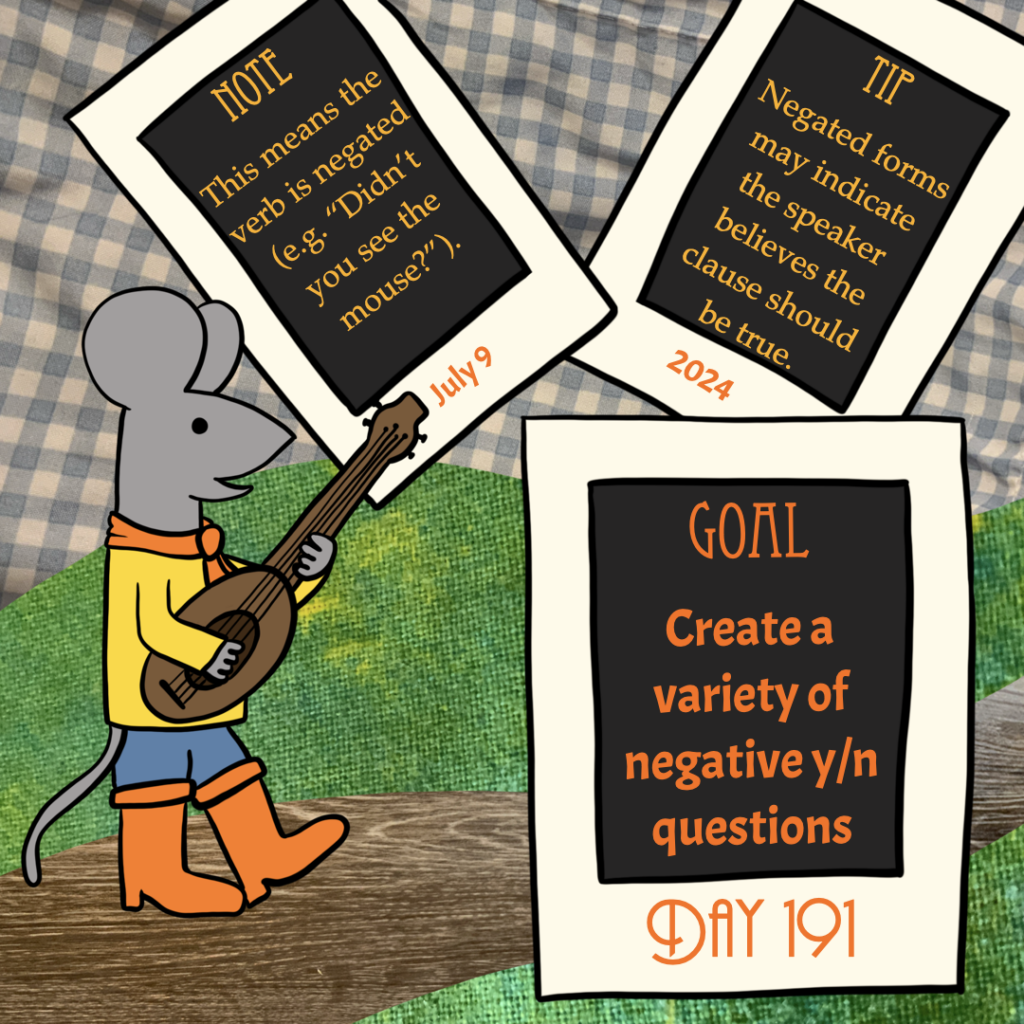
Goal: Create a variety of negative y/n questions
Note: This means the verb is negated (e.g. “Didn’t you see the mouse?”).
Tip: Negated forms may indicate the speaker believes the clause should be true.
Work focus: Create/Make/List
Today’s focus shifts to negative y/n questions, such as “Didn’t you see the mouse?” or “Isn’t that bread baked yet?” Create example negative y/n questions for your language, which may mean creating a negative y/n interrogative particle, auxiliary, or inflection.
As you work, you can consider what kinds of situations would prompt your speakers to use a negated y/n question rather than a positive one. Sometimes, negated y/n questions indicate the speaker believes the information is or should be true. Asking “Didn’t you see the mouse?” in English indicates that the speaker thinks the person should have seen the mouse, and an answer of “no” has a bit of a surprisal factor.
You can decide if you want to build in a similar kind of feature into your language for when speakers choose to negate these question forms.
